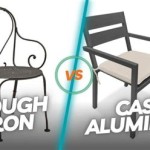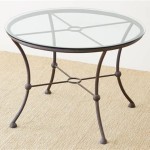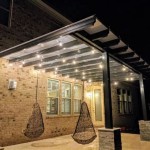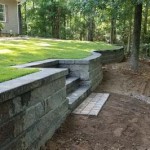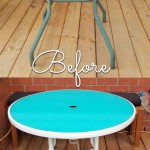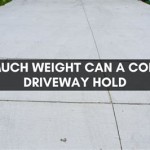How To Resurface a Concrete Patio
Concrete patios offer a durable and versatile outdoor living space. However, over time, exposure to the elements, heavy foot traffic, and general wear and tear can leave a concrete patio looking cracked, stained, and generally unappealing. Rather than undertaking the costly and disruptive process of completely replacing the patio, resurfacing provides an effective and more economical solution for revitalizing its appearance and extending its lifespan. This article details the process of resurfacing a concrete patio, outlining the necessary steps, materials, and considerations for achieving a professional-looking and long-lasting result.
Resurfacing a concrete patio involves applying a thin layer of new material over the existing concrete surface. This layer can be a concrete overlay, epoxy coating, or other specialized product designed to bond with the original concrete and create a fresh, seamless surface. The success of a concrete resurfacing project hinges on proper preparation, careful application, and adherence to manufacturer guidelines. Neglecting any of these aspects can lead to premature failure of the resurfacing material, requiring costly repairs or even complete replacement.
Key Considerations Before Starting
Before embarking on a concrete patio resurfacing project, it is crucial to assess the condition of the existing concrete and carefully plan the work. Several factors need consideration to ensure a successful outcome.
Assessing the Existing Concrete: A thorough inspection of the patio is the first critical step. Examine the surface for cracks, spalling (flaking or crumbling), stains, and other signs of damage. Determining the extent and nature of the damage will dictate the necessary repairs and the appropriate resurfacing material to use. Minor hairline cracks, typically less than 1/8 inch wide, can often be addressed with crack fillers or patching compounds during the preparation phase. Larger cracks, especially those exhibiting movement or structural issues, may require more extensive repairs, such as routing and filling with a flexible sealant or even concrete patching.
Spalling, which involves the surface of the concrete breaking away in small pieces, often indicates water infiltration and freeze-thaw damage. Affected areas need to be thoroughly cleaned and repaired before resurfacing to prevent the damage from spreading beneath the new layer. Stains, whether from oil, rust, or organic matter, should be treated with appropriate cleaning solutions to remove as much of the discoloration as possible. Pressure washing alone may not be sufficient to remove deep-seated stains.
Choosing the Right Resurfacing Material: A variety of resurfacing materials are available, each with its own set of characteristics, advantages, and disadvantages. Concrete overlays are among the most popular options, offering a durable and versatile finish that can be textured, colored, and stamped to mimic the look of natural stone, brick, or tile. They are typically composed of a cement-based mixture modified with polymers and additives to enhance adhesion, strength, and workability.
Epoxy coatings provide a smooth, glossy surface that is resistant to chemicals, stains, and abrasion. They are often used in garages and commercial settings but can also be applied to patios to create a modern, sleek look. However, epoxy coatings may not be as durable as concrete overlays in outdoor environments, especially in areas with extreme temperature fluctuations. Acrylic overlays are another option, offering good flexibility and resistance to cracking. They are typically less expensive than concrete overlays but may not be as long-lasting.
Micro-toppings are very thin cement-based coatings that can be applied to create a smooth, seamless surface. They are often used to cover minor imperfections and provide a fresh canvas for staining or decorative finishes. Self-leveling overlays are designed to flow easily and create a perfectly level surface, ideal for patios with uneven or sloped areas. The choice of material depends on the desired aesthetic, the level of durability required, and the budget.
Planning and Preparation: Thorough planning is essential for a successful resurfacing project. This includes accurately measuring the patio area to determine the amount of material needed, gathering the necessary tools and equipment, and scheduling the work during favorable weather conditions. Resurfacing should be performed when the temperature is within the manufacturer's recommended range, typically between 50°F and 80°F, and when there is no rain or excessive humidity in the forecast. Proper preparation also involves protecting surrounding areas, such as landscaping, siding, and windows, from dust and splatters. This can be accomplished by covering them with plastic sheeting or drop cloths.
The Resurfacing Process: A Step-by-Step Guide
The concrete patio resurfacing process involves several key steps, each crucial to achieving a durable and aesthetically pleasing result. While specific instructions may vary depending on the chosen material and manufacturer recommendations, the following general guidelines apply.
Surface Preparation: This is arguably the most important step in the entire process. A properly prepared surface ensures optimal adhesion of the resurfacing material and prevents premature failure. The first step is to thoroughly clean the patio using a pressure washer with a detergent designed for concrete. This removes dirt, debris, mildew, and loose particles. For stubborn stains, a concrete cleaner or degreaser may be necessary. After cleaning, allow the patio to dry completely before proceeding.
Next, inspect the surface for cracks and other imperfections. Hairline cracks can be filled with a concrete crack filler using a putty knife. Larger cracks may require routing out the crack with a crack chaser and filling it with a flexible sealant, such as polyurethane or silicone caulk. Spalled areas should be cleaned and patched with a concrete patching compound. Follow the manufacturer's instructions for mixing and applying the patching compound. It is essential to allow the patching compound to cure completely before proceeding to the next step.
Finally, the concrete surface needs to be profiled to create a rough texture that will promote adhesion of the resurfacing material. This can be achieved by acid etching, grinding, or shot blasting. Acid etching involves applying a diluted solution of muriatic acid to the concrete surface, which etches the concrete and creates a rough texture. Grinding involves using a concrete grinder with a diamond grinding wheel to roughen the surface. Shot blasting involves propelling small steel shot at the concrete surface to remove the top layer and create a textured profile. The choice of method depends on the type of concrete, the condition of the surface, and the desired level of roughness. After profiling, the surface must be thoroughly rinsed and cleaned to remove any residue or dust.
Mixing and Application: Once the surface is properly prepared, the resurfacing material can be mixed according to the manufacturer's instructions. It is crucial to follow the recommended mixing ratios and techniques to ensure the material is properly hydrated and has the correct consistency. Over-watering or under-watering can affect the material's strength and durability. Use a concrete mixer or a heavy-duty drill with a mixing paddle to thoroughly combine the material.
Before applying the resurfacing material, dampen the concrete surface with water. This helps to improve adhesion and prevent the concrete from absorbing moisture from the resurfacing material too quickly. Apply the resurfacing material using a trowel, squeegee, or sprayer, depending on the type of material and the desired texture. For concrete overlays, a trowel is typically used to apply a thin, even layer of material. Multiple layers may be required to achieve the desired thickness and texture. For epoxy coatings, a squeegee or roller is often used to apply a smooth, uniform layer. For spray-applied overlays, a hopper gun or other specialized equipment is required. Work in small sections and blend the edges to avoid creating seams or ridges.
Finishing and Curing: After applying the resurfacing material, it can be finished to create the desired texture or pattern. This can be achieved by using a trowel, brush, roller, or stamping tools. For example, a broom finish can be created by dragging a broom across the surface of the wet concrete. A textured finish can be created by using a textured roller or sponge. A stamped concrete look can be achieved by using concrete stamps to imprint patterns into the wet concrete.
Once the resurfacing material has been finished, it needs to be properly cured to achieve its full strength and durability. Curing involves keeping the surface moist for a specified period of time, typically 3 to 7 days. This can be achieved by spraying the surface with water, covering it with plastic sheeting, or applying a curing compound. Follow the manufacturer's instructions for the specific curing method and duration. Proper curing prevents the concrete from drying out too quickly, which can lead to cracking and weakening.
Maintenance and Long-Term Care
Proper maintenance is essential for prolonging the life of the resurfaced concrete patio and keeping it looking its best. Regular sweeping and cleaning will remove dirt, debris, and stains. Avoid using harsh chemicals or abrasive cleaners, as they can damage the surface. A mild detergent and water are usually sufficient for cleaning. For stubborn stains, a concrete cleaner specifically designed for use on resurfaced concrete can be used.
Sealing the resurfaced concrete is also recommended to protect it from water damage, stains, and UV degradation. A concrete sealer should be applied according to the manufacturer's instructions every 1 to 3 years, depending on the type of sealer and the level of exposure to the elements. Inspect the surface regularly for cracks or other damage and repair them promptly to prevent further deterioration. Avoid using de-icing salts on the resurfaced concrete, as they can damage the surface. Instead, use sand or other traction aids to prevent slipping in icy conditions.
By following these guidelines, one can effectively resurface a concrete patio and transform it into a beautiful and functional outdoor living space. The attention to detail during the preparation, application, and curing phases will directly impact the final product's longevity and aesthetic appeal.

3 Concrete Resurfacing Options For Patio

Resurfacing A Concrete Patio For Budget Diy Makeover Fab Everyday

Resurfacing A Concrete Patio For Budget Diy Makeover Fab Everyday

Concrete Resurfacing Projects And Supplies Intermountain

Concrete Patio Resurfacing Coatings Houston Tx Sundek

Concrete Patio Resurfacing Austin Tx Sundek

Concrete Patio Resurfacing Sydney We Repair Resurface Your

Concrete Resurfacing Long Island Infinity Floors Best Contractor In The Tri State

Stamped Concrete Resurfacing Riverview Fl

Concrete Resurfacing Restaining Northwest Ar Nwa Floors
Related Posts

